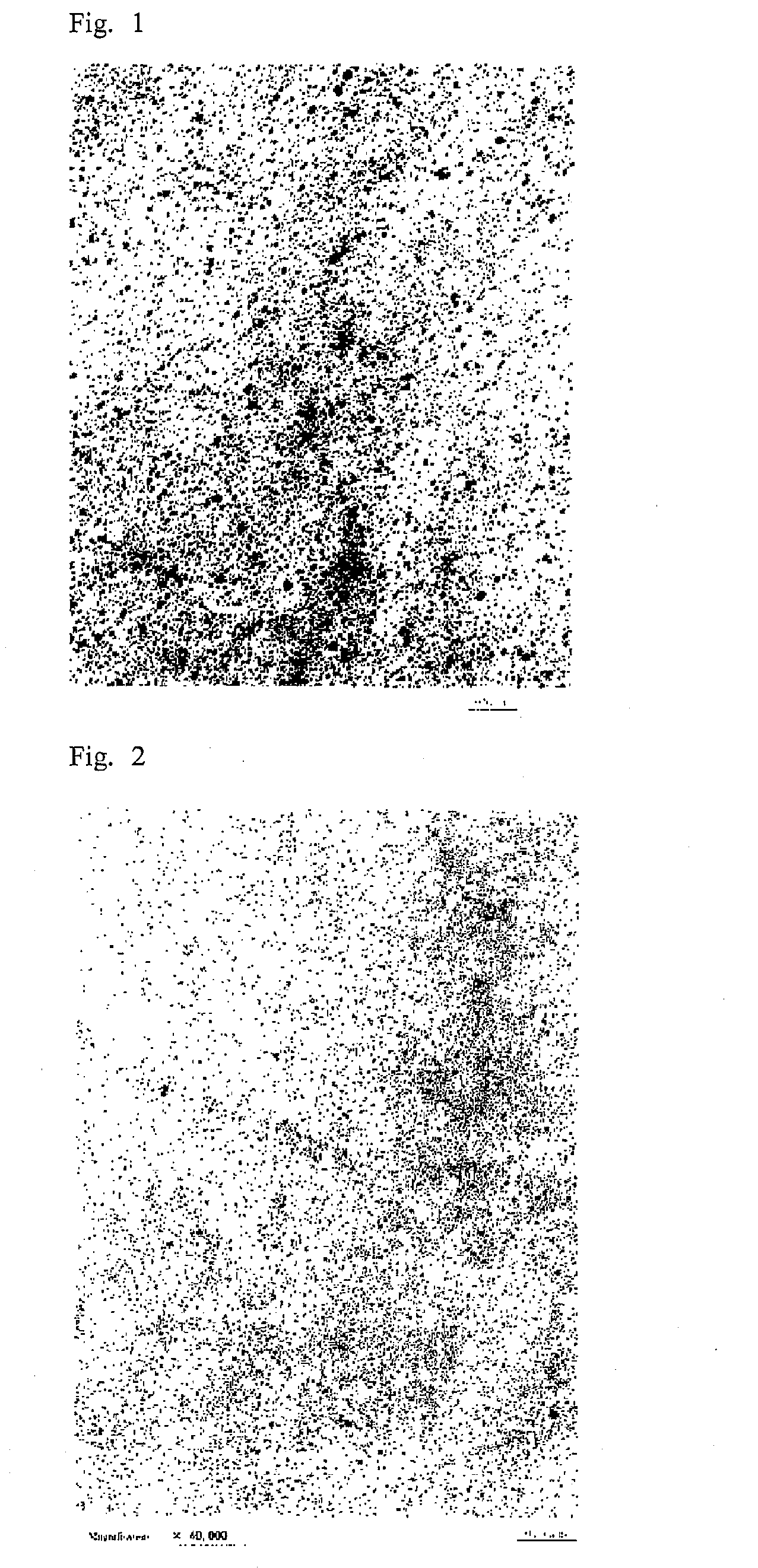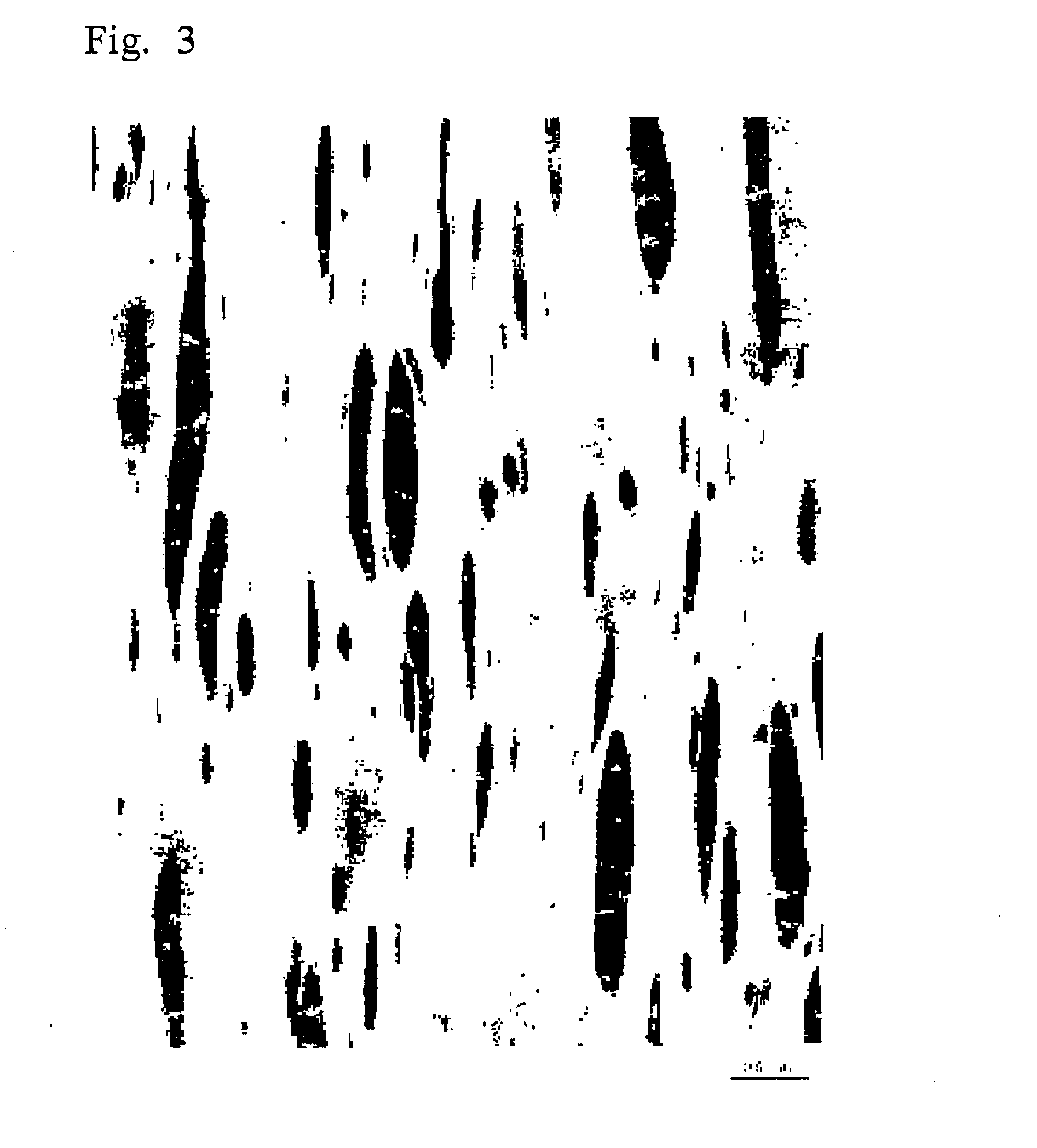Carbon fiber reinforced composite materials
a technology of thermoplastic composite materials and carbon fibers, which is applied in the direction of weaving, synthetic resin layered products, chemistry apparatus and processes, etc., can solve the problems of inability to produce, take more time to prepare a composite material having the final shape, and many hours to cure, so as to achieve excellent interfacial adhesion and improve mechanical properties
- Summary
- Abstract
- Description
- Claims
- Application Information
AI Technical Summary
Benefits of technology
Problems solved by technology
Method used
Image
Examples
examples
[0085]Hereinafter, the present invention is described based on the following examples which, however, are not intended to limit the scope of the present invention. The used raw materials and the measurement conditions of the properties are described below.
[0086](Preparation 1)
[0087]Preparation of Glycidyl Methacrylate / Styrene (GMA / St)-Modified Polypropylene:
[0088]A hopper of a twin screw extruder (TEX44, L / D=40, product of The Japan Steel Works, LTD.) set to 200° C. was fed with (a) 100 parts by weight of homopolypropylene (J105G, product of Prime Polymer Co., Ltd., MFR=9) and (b) 0.5 parts by weight of 1,3-di(t-butylperoxyisopropyl)benzene (product of NOF Corporation, PERBUTYL P, one-minute half-life temperature: 175° C.), and the materials were melt kneaded. A liquid mixture of (c) 5 parts by weight of styrene and (d) 5 parts by weight of glycidyl methacrylate was then injected at the middle of the cylinder, and the resulting mixture was melt kneaded, so that pellets of a modified...
example 1
[0109]A stainless steel plate (thickness: 1 cm, 10-cm square) having a projection (thickness: 2 mm, 6.5-cm square) was engaged with a stainless steel spacer (thickness: 1 cm, 10-cm square) having a central opening (thickness: 1 cm, 6.5-cm square). A Teflon (registered trademark) sheet was placed as a release film in the opening, and the modified polypropylene film prepared in Preparation 1 and the carbon fiber plain weave material were alternately stacked on the sheet such that the resulting stack had a total of 13 polypropylene layers and a total of 12 carbon fiber layers. The amount of the stacked polypropylene was adjusted to 50 wt % of the total weight of the composite material. The carbon fiber plain weave material used was one from which the sizing agent had been removed using an acetone solvent.
[0110]On the top of the stack, the same modified polypropylene film was further stacked. After placing in a 230° C. vacuum chamber, the resulting stack was vacuum distilled for 20 minu...
example 2
[0111]A carbon fiber composite material was produced in the same manner as in Example 1, except that the pressure applied was 20 MPa. Table 1 shows the results.
PUM
| Property | Measurement | Unit |
|---|---|---|
| diameter | aaaaa | aaaaa |
| diameter | aaaaa | aaaaa |
| interlaminar shear strength | aaaaa | aaaaa |
Abstract
Description
Claims
Application Information
 Login to View More
Login to View More - R&D
- Intellectual Property
- Life Sciences
- Materials
- Tech Scout
- Unparalleled Data Quality
- Higher Quality Content
- 60% Fewer Hallucinations
Browse by: Latest US Patents, China's latest patents, Technical Efficacy Thesaurus, Application Domain, Technology Topic, Popular Technical Reports.
© 2025 PatSnap. All rights reserved.Legal|Privacy policy|Modern Slavery Act Transparency Statement|Sitemap|About US| Contact US: help@patsnap.com


